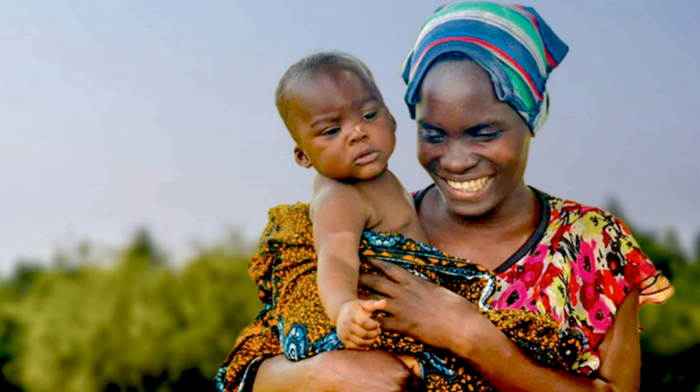
Last year, 6,235 women and girls gave birth at Nyarugusu refugee camp. And not one of them died due to pregnancy or childbirth.
“I thank the health-care workers, nurses and doctors for the high-quality, thoughtful services they provided during labour and delivery, and for welcoming my baby into the world,” said 27-year-old Faila Kashindi, who gave birth to her fourth child at the camp last year.
Hundreds of thousands of women and girls unfortunately do not get to experience what Ms. Kashindi did: A safe pregnancy and birth. Progress in the global fight to safeguard the lives of mothers has recently stagnated, and in 2020 an estimated 287,000 maternal deaths occurred worldwide.
The United Republic of Tanzania itself had the tenth-highest national maternal mortality rate for 2020, recording 5,400 maternal deaths.
Against this backdrop, skilled health-care providers helped Nyarugusu buck the trend of faltering progress and mothers like Ms. Kashindi to navigate pregnancy and childbirth with confidence.
Ms. Kashindi’s birth at Nyarugusu, via Caesarean, went off without a hitch. “The baby and I are healthy and doing well,” she said.
Simple solutions to a global problem
As the UN’s lead agency for sexual and reproductive health and rights, UNFPA centres its work on achieving three transformative results — one of which is to end preventable maternal deaths by 2030.
While the question of how to accomplish this goal may call to mind dramatic interventions in emergency rooms, the truth is, the vast majority of maternal deaths can be prevented using simple solutions experts have endorsed for decades.
“We can and must do better by urgently investing in family planning and filling the global shortage of 900,000 midwives so that every woman can get the lifesaving care she needs,” said UNFPA Executive Director Dr. Natalia Kanem in a statement.
UNFPA’s 2021 State of the World’s Midwifery report reveals that well-trained midwives could help avoid about two thirds of all maternal and newborn deaths. And according to the WHO, the presence of a skilled health professional at childbirth can mean the difference between a mother surviving or suffering a preventable death.
UNFPA has supported the deployment of 15 skilled nurse-midwives to Nyarugusu, as well as the training of 47 health workers across three refugee camps in Kigoma. At Nyarugusu, more than 99 per cent of deliveries are conducted by skilled health-care workers. (The global rate is 84 per cent.)
Ms. Kashindi’s birth was attended by a provider trained in emergency obstetric care and infection prevention and control. Earlier in her pregnancy, an ultrasound had revealed her baby’s large size, and health-care workers recommended a Caesarean section. She underwent the procedure in March 2022 at the Nyarugusu camp health facility, which UNFPA had provided with surgical equipment for obstetric and neonatal care.
“I was worried, but the doctors and nurses provided counselling, and then I relaxed,” Ms. Kashindi said. “I could see that my baby was okay.”
Train providers, gain trust
Ms. Kashindi’s safe birth story reflects not just the expertise of her providers, but a change in her community’s orientation towards health care.
Nurse-midwife Benedicta Kweslema, who has worked in Nyarugusu’s main hospital’s maternity wing for the past two years, says that patient confidence has increased as providers’ skills have improved.
She and her colleagues recently attended two UNFPA-supported training sessions covering emergency preparedness and response, infection prevention and control, newborn care and injection safety.
“This training expanded our technical skills and knowledge on monitoring of labour and early detection of danger signs to make deliveries safer,” she said. “I am better able to identify direct and indirect needs, and more effectively care for patients.”
As a result, Ms. Kweslema has improved her relationships with mothers and the refugee community.
“The training enhanced trust, leading to an increased number of women seeking health services, and an increased number of safe deliveries at our health facilities,” she said.
More and more safe deliveries mean fewer and fewer maternal deaths — down from five in 2019 and four in 2020 and 2021, all the way to zero in 2022.
Source: Relief Web
